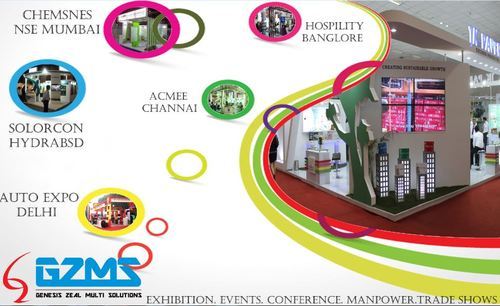Portable Stall Designing

Understanding the Significance of Portable Stall Designing:
Portable stalls serve as the physical embodiment of a brand's identity and values during events and exhibitions. They act as a focal point for attracting potential customers, showcasing products or services, and fostering meaningful interactions. A well-designed portable stall not only enhances brand visibility but also reinforces brand recall among attendees long after the event concludes. Therefore, investing in thoughtful stall design is crucial for maximizing the impact of participation in events and exhibitions.
Innovative Approaches to Portable Stall Designing:
Modular Design Concepts:
Embracing modular design principles allows for flexibility and scalability in stall configurations. Modular components can be easily assembled, disassembled, and rearranged to accommodate varying space constraints and objectives. Additionally, modular stalls facilitate cost-effectiveness by enabling reuse across multiple events with minimal modifications. Incorporating modular elements such as interchangeable panels, fixtures, and signage empowers brands to adapt their presence swiftly to suit diverse exhibition environments.
Immersive Brand Experiences:
Leveraging immersive technologies such as augmented reality (AR) and virtual reality (VR) transforms traditional stall setups into captivating brand experiences. By integrating AR/VR elements into stall design, brands can transport attendees into interactive digital environments, allowing them to explore products virtually and engage with brand narratives in novel ways. This immersive approach not only captivates attention but also leaves a lasting impression, fostering deeper connections between the brand and its audience.
Sustainable Materials and Practices:
With growing environmental awareness, incorporating sustainable materials and practices in stall design has become imperative. Utilizing eco-friendly materials, such as recycled plastics, bamboo, or cardboard, not only reduces environmental impact but also communicates a brand's commitment to sustainability. Furthermore, adopting sustainable practices such as energy-efficient lighting, recyclable signage, and waste reduction strategies aligns with the values of environmentally-conscious consumers, enhancing brand reputation and credibility.
Interactive Engagement Zones:
Creating interactive engagement zones within portable stalls encourages active participation and fosters memorable experiences for attendees. Incorporating elements such as touchscreen displays, product demonstrations, interactive games, or live demonstrations sparks curiosity and encourages meaningful interactions with the brand. By offering hands-on experiences, brands can effectively educate, entertain, and convert prospects into loyal customers, thereby maximizing the return on investment from event participation.
Personalized Brand Interactions:
Tailoring brand interactions to individual preferences enhances engagement and strengthens brand affinity. Implementing personalized touchpoints such as custom greetings, product recommendations based on attendee preferences, or interactive surveys cultivates a sense of exclusivity and relevance. Leveraging customer data and analytics enables brands to deliver personalized experiences that resonate with attendees on a deeper level, driving conversion and brand loyalty.
Portable stalls serve as the physical embodiment of a brand's identity and values during events and exhibitions. They act as a focal point for attracting potential customers, showcasing products or services, and fostering meaningful interactions. A well-designed portable stall not only enhances brand visibility but also reinforces brand recall among attendees long after the event concludes. Therefore, investing in thoughtful stall design is crucial for maximizing the impact of participation in events and exhibitions.
Innovative Approaches to Portable Stall Designing:
Modular Design Concepts:
Embracing modular design principles allows for flexibility and scalability in stall configurations. Modular components can be easily assembled, disassembled, and rearranged to accommodate varying space constraints and objectives. Additionally, modular stalls facilitate cost-effectiveness by enabling reuse across multiple events with minimal modifications. Incorporating modular elements such as interchangeable panels, fixtures, and signage empowers brands to adapt their presence swiftly to suit diverse exhibition environments.
Immersive Brand Experiences:
Leveraging immersive technologies such as augmented reality (AR) and virtual reality (VR) transforms traditional stall setups into captivating brand experiences. By integrating AR/VR elements into stall design, brands can transport attendees into interactive digital environments, allowing them to explore products virtually and engage with brand narratives in novel ways. This immersive approach not only captivates attention but also leaves a lasting impression, fostering deeper connections between the brand and its audience.
Sustainable Materials and Practices:
With growing environmental awareness, incorporating sustainable materials and practices in stall design has become imperative. Utilizing eco-friendly materials, such as recycled plastics, bamboo, or cardboard, not only reduces environmental impact but also communicates a brand's commitment to sustainability. Furthermore, adopting sustainable practices such as energy-efficient lighting, recyclable signage, and waste reduction strategies aligns with the values of environmentally-conscious consumers, enhancing brand reputation and credibility.
Interactive Engagement Zones:
Creating interactive engagement zones within portable stalls encourages active participation and fosters memorable experiences for attendees. Incorporating elements such as touchscreen displays, product demonstrations, interactive games, or live demonstrations sparks curiosity and encourages meaningful interactions with the brand. By offering hands-on experiences, brands can effectively educate, entertain, and convert prospects into loyal customers, thereby maximizing the return on investment from event participation.
Personalized Brand Interactions:
Tailoring brand interactions to individual preferences enhances engagement and strengthens brand affinity. Implementing personalized touchpoints such as custom greetings, product recommendations based on attendee preferences, or interactive surveys cultivates a sense of exclusivity and relevance. Leveraging customer data and analytics enables brands to deliver personalized experiences that resonate with attendees on a deeper level, driving conversion and brand loyalty.





















